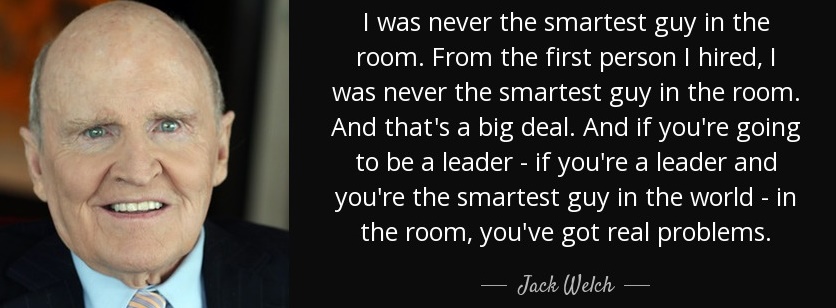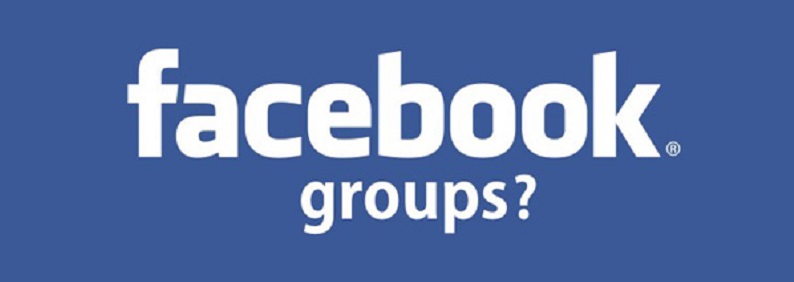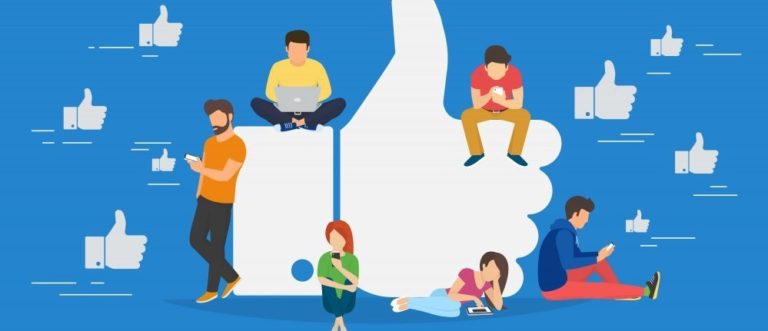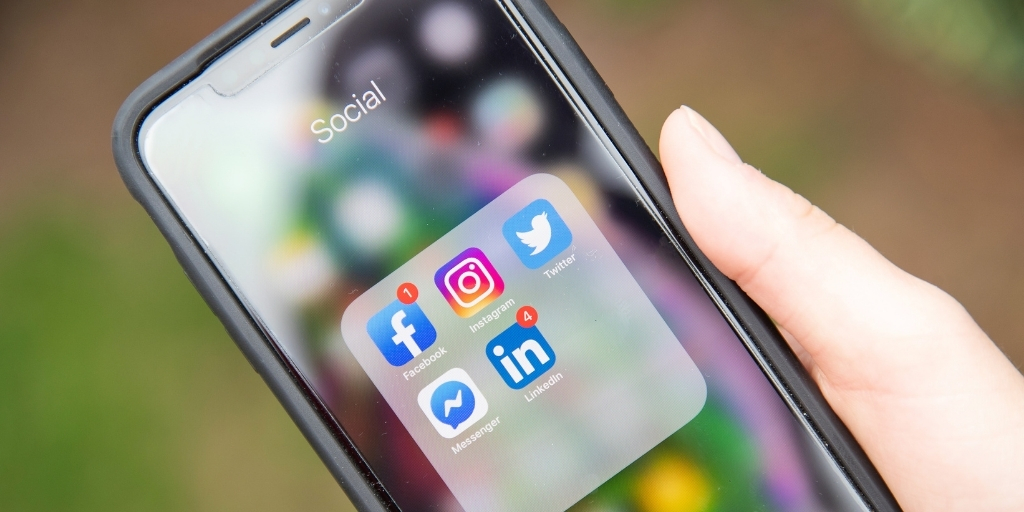Archives for November 2017
Terminating Sales Reps: Best for your company?

Many small business owners employ a physical sales team for many reasons. Especially those who have a high-touch personal offer, a high-value transaction, or those who truly believe that the personal approach trumps today’s modern digital sale. After all one of the keys to success is learning how to sell.
Sales leadership positions come with an array of roles and responsibilities. Keeping the vision front and center may be the biggest hat worn by the leader, however, possibly not the most important.

That is because leaders must set the vision and lead by example in order to maintain a thriving culture in a team-oriented organization. But how that vision is implanted into a sales team is more important.
Team unification and employee success are areas that have the biggest return in the end. Accepting a leadership position is about teaching, not telling; about leading, not ordering. Leaders should lead, not dictate or demand. Leaders should mentor and empower.
Do you terminate salespeople for a lack of sales?
One hat that sales leaders wear, that may not always fit well, is terminating an employee. Some in this role believe that metrics, KPI’s and the lack of conversions while using a trained sales process, is a dismissible offense. Some sales leaders believe that salespeople fire themselves when they do not hit a quota in a given period.
Sitting down with a member of your sales team, discussing weaknesses or lack of sales performance can be gut-wrenching.
No doubt it can be easier to simply terminate them from the position and move on, never really confronting the issues at hand. Termination of a salesperson who failed to meet sales expectations based upon a written agreement may be a right. It also may not be what is to blame.
What if this wasn’t best for your company?
Or for them as an employee? After all, if issues are not addressed, they only resurface. You could end up spending more time dealing with a future employee with the same struggles if you, as a leader, don’t get to the root issue.
The root issue
What about the characteristics of the sales leader who is consistently terminating employees?
One characteristic of a great leader is decisiveness, the ability to make commitments without hesitation. This aspect encompasses courage, passion, and vision.
However, to any coin, there are two sides. Decisiveness at its best goes hand in hand with humility. A humble character brings out unity and collaboration within the team.
Before firing consider a new direction. Invest in the rep's success.
- Coaching
- Have you personally sat down with your staff and coached them through a sales transaction?
- Have your criticized your own sales process by observing the reactions of the prospect while being pitched?
- Have they watched you make sale calls/transactions as a model of correct process and communication?
- Investing
- Have you personaly met with a struggling sales rep to ensure their goals are actionable?
- Have you invested in initial and on-going training throughout their employment?
- Analyze how your marketing feeds leads to your sales people?
- Break down the targeting, the content, the funnel process and the information fed to the prospect that the sales team is expected to call a lead.
- Is your offer the problem with your turnover? Are you sure?
- Reinforce Success
- Have you consistently reinforced them when they have experienced success?
- Do you praise in public and criticize in private?
- Find their niche
- Have you had a genuine conversation with them to determine if sales is an appropriate fit?
- Have you explored other areas in the company where they may be more successful?
- Check and Balance
- Consider their direct manager; would a switch to a different manager be appropriate?
- Validate your decision; has another leader in the company confirmed you’ve put forth your best effort with the employee before termination?
- Have you considered dismissing the sales manager or recruiter or marketer?
Before you consider terminating the struggling sales team member, stop and think about these questions. Leadership is far from easy, not only are you investing in your product, you’re investing in your team. Carving out time to explore these areas may prove to be well worth your effort.
Facebook Groups | 10 Lessons Learned Building a Strong Community

Successful Facebook Groups are not about the brand, they are not about the organization and they are certainly not about the administrator of the group. Facebook Groups are about your group members and the community they build socializing with each other within a facilitated group.
A Facebook Group is a community and is NOT an audience! If your Facebook Group is mainly a discussion between the organization and the members of the group, that’s an audience, not a community. However, if the conversation is mainly between the group members themselves, that is a community!

At a recent MeetUp, sponsored by DigitalMarketer.com and Viral Solutions, Suzi Nelson was our gracious guest speaker. During this meetup, Suzi shared with the group her experience building groups and supplied her presentation “10 lessons I learned on building a strong customer community”, so we could share it here with you. This article is part two on this topic, you can find part one here. The information shared here was provided to Viral Solutions and we thank Suzi for allowing us to share it with our community.
Who is Suzi Nelson and what is her role at Digital Marketer?

Suzi Nelson is the Lead Community Strategist at Digital Marketer. She has a degree in Journalism (Strategic Communications) from the University of Kansas (Rock Chalk Jay Hawk!) and is an avid defender of the Oxford comma. You can find Suzi connecting with DM's customers in their Facebook mastermind groups, DM Engage and DigitalMarketer ELITE Commons. Connect with her on Twitter or LinkedIn.
10 Lessons Learned Building a Strong Community with Facebook Groups
1) Know Where Your Community Fits.
As your prospective customer or client moves through your customer journey it is important to understand where that person is along this map and where your Facebook Group intends to fit in that same map. Suzi points out in her presentation, that the role of marketing is to move prospects and customers seamlessly through each stage of the Customer Value Journey. No one community can move people through the entire Value Journey. Digital Marketer states that there are three primary phases in a customer journey that need to match a community. 1) Aware & Engage Communities 2) Excite & Ascend Communities 3) Advocate and Promote Communities. An awareness community might consist of prospects. Excite communities might consist of new customers. Advocate communities might consist of long time loyalists.
2) It's Not About You.
Most SMB's are under pressure to maximize sales in all forms of marketing. This is not the place to pitch. Groups are not about you. Your community is not your audience. If the conversation within your community is primarily between you and your community members, then they are your audience. If conversation is mainly between members of your group, that's a community! Suzi continued to say, “A segment of people who form relationships as a result of shared goals, experiences, and interests – that is a community.” Your community should be a segment of your market and those members should have been targeted for their interest in what you offer and where they exist in your customer journey. Yes, they should have some experience with your brand, your services, your industry and their need should match your USP. However, the focus needs to be on their relations with each other and not with you! Your role is to facilitate those relationships and keep the conversation growing. You may do so by calling upon other members to answer certain questions from your community members, you should not be the one who always answers those questions. Get antiquated by welcoming people, introduce people who have common needs, be patient and wait for those connections and continue to build those introductions to fellow community members.
3) Make Your Community Exclusive.
Everybody wants to be on the inside and feel like they have exclusive access to information. This is the beauty of Facebook Groups and managing such a community. Such exclusivity creates stronger relationships with fellow members and the associated brand, without the brand pushing itself. The more exclusive the group, the more they have in common and the more engaged they will become as you facilitate discussion. Controlling access by requiring and vetting registration will fuel such exclusivity.
The result? Your members feel like VIPs. In the Excite and Ascend Communities, your members will discuss your services and promote them to those who need something better, which you offer, without you doing the pitching. Those members of your group are golden brand advocates. Even though this exclusivity exists your group will still experience a disconnect with a sizable portion of the members. Suzi Nelson states, “The pain of disconnect is when the act of disconnecting with a process, service, or habit causes emotional pain or discomfort. This is evidenced by those inactive and unengaged members suddenly realizing they are missing our by only observing the conversation.”
4) Don't Be a Salesperson.
“When it's time to buy, customers get picky. What do they actually want to see? 60% of customers place peer recommendations above professionally written copy. Content created by peers is more influential than brand created content.”
– Reevo.
People by nature do not trust the brand as much as they trust the brand advocate. The members of your community will support you when they feel supported and valued. Deliver on your promise and the selling will come without you having to ask for it.

5) Don't Fight in Front of the Family.
As a community manager your role is to moderate and facilitate discussion. Your members need to feel like your community group site is a place that they feel safe sharing their views and insights. When a disagreement arises your community manager needs to be prepared and have written plans to handle a heated discussion. Your group must be monitored almost around the clock by a human being who can respond very promptly, make empathetic statements and move the discussion to a private channel.
6) Love Your New Members.
Your Facebook Groups will experience turnover and conversations will become stale without new members. New members are the lifeblood of a community. When new members are accepted into your group your community manager needs to welcome them and get them involved with the discussion immediately. This can be facilitated by having standardized questions as soon as new members are accepted and those questions should guide the community manager in finding someone within the group to buddy up with. The beauty of Facebook Groups is that you can do his by tagging the new member in a post of by gathering information on their needs via a direct message.
7) Build a Tribe.
A strong sense of community requires four factors that members must feel. They must feel like exclusive members, they must feel the benefit of influence, they must feel emotionally connected and they must feel that their needs are being fulfilled. Members should know how to recognize each other and often times groups create logos or badges for such, Facebook helps with this recognition by referencing group membership. Members feel their actions can influence the group, and that the group can influence their own actions. To help manage these relationships it is wise to have a group policy and an understanding about group language and jargon. Participation should be rewarded through recognition and rewards. Software does exist for community managers that can help find the person who had the most positive impact on the goals of the group – give them a shout-out.
8) Celebrate the Wins.
Praise in public and criticize in private. Nothing like publicly being praised. That act alone will fuel positive activity within a community. When you do so, be specific and do not be afraid to step outside the channel when you have a community member that exceeds expectations on a regular basis. Such as a snail mail card, chocolates or flowers.
9) Community is a Sounding Board.
Business owners only care about revenues and costs. However, there are four elements to successful social media marketing and these also apply to community management, direct revenue is not one of them, indirect selling is.
- Social Listening is the act of monitoring and responding customer service and reputation management issues within a social media platform.
- Social Influencing is the act of establishing authority on the social web often through commentary or the distribution of helpful and practical content. Social Listening can help your brand fill in product gaps, content gaps, understand marketing feedback and resolve issues that were unknown to the brand or community manager.
- Social Networking is finding centers of influence within a social circle or group that is an advocate for your brand.
- Social Selling is indirectly finding leads that wish to discuss the products and services in an off channel that other members keep referencing on your behalf. Exclusive Facebook Groups and social communities help make your products and services better. Typically these groups contain members who are the best at giving constructive feedback and issuing a list of ideas to for such feedback.
10) Build Trust.
Your community manager, while only a group facilitator, must be able to not only extend influence but also build trust. Not only do members build trust with each other, they are also building trust with your brand. To reinforce trust, highlight community leaders that are community members with great insight and critical thinking skills, monitor those lonely threads where a member has posted a query and nobody has responded from with the community – find that internal member before you take action on answering yourself.
These 10 lessons, which Suzi Nelson shared at a Digital Marketer MeetUp in Chicago can help you build a strong community within your Facebook Groups. If you would like to improve your skills in social media we highly recommend the Social Media Mastery Certification by Digital Marketer.
Facebook Groups | Strong Customer Communities and Brand Advocacy
Table of Contents
Facebook groups continue to gain in popularity and in many cases it has replaced continuity and membership sites. There are as many uses as there are Facebook users. Facebook groups are an increasingly important tool. The best businesses use Facebook groups to help build trust with the brand.
As you know doubt know, engagement on Facebook for brands and publishers is down 22% YTD 2017 when compared to 2016. Unfortunately, as with many social media tactics, small business owners judge a Facebook Group only by watching metrics that measure costs and revenue.
Facebook Groups exist to enhance a sense of community. Great Facebook Groups help a brand show that it is trustworthy and to help form relationships between a brand's customers and prospects. They do not push product sales!
Ok, so that depends on what stage of the customer journey that the Facebook Group supports in any business.
How does a business owner build a successful Facebook Group?
This is the very topic that was discussed and presented during a recent Digital Marketer Meetup in Chicago, hosted by Viral Solutions, which Suzi Nelson [Community Strategist] gave as a presentation called “Next Level Social Media: Building Successful Product Communities with Facebook Groups.” This article was curated based upon Suzi's presentation.

Building a successful Facebook Group is part and parcel of knowing where your community fits in the customer journey. Some groups fuel the brand awareness and prospective customer engagement path. Many Facebook Groups attempt to excite a customer that may have purchased a tripwire and the group exists to ascend the relationship into a deeper product mix. Other Facebook Groups feed into the customer excitement and brand advocate portion.
Successful groups do NOT do all of those phases!
“The role of marketing is to move prospects and customers seamlessly through each stage of the Customer Value Journey. No one community can move people through the entire value journey.” ~ Suzi Nelson

What effect does a Facebook Group have on a businesses metrics?
Well, at the beginning of this article we through a dig at business owners that only evaluate the success of Facebook Groups based upon lowering costs and increasing revenue. LOL – ok so we agree we just do not see that as being the first measurement of a great group. Therefore, now we are going to give you two quotes shared at the Chicago Meetup of DigitalMarketer.com.
“Sephora's Beauty Talk members spend 2x more that their average customer. Superfans spend 10x more that the average community member” – Lithium
“Udemy instructors are 4x more likely to create a course if they are members of their online community.” – CMX
However an organization measures the success of its Facebook Group make sure it does so based upon the goals of the group and not based upon the group of another entity.
What basic human need does a Facebook Group meet?
A sense of community belonging! According to Suzi, a community is defined as a segment of people who form relationships as a result of shared goals, experiences and interests. She further explains that a Community Manager's role is to facilitate, encourage and maintain those relationships.

The basic human need to form relationships with each other, not just with a brand!
Successful Facebook Groups are not about the brand, they are not about the organization and they are certainly not about the administrator of the group.
A Facebook Group is a community and is NOT an audience! If your Facebook Group is mainly a discussion between the organization and the members of the group, that's an audience, not a community. However, if the conversation is mainly between the group members themselves, that is a community!
Indeed your Facebook Group should be a community of those who represent the segment of your market that the group would appeal to. They will have a common interest, life experience and objectives that correlate to your brand and products. But it primarily exists to enhance an engagement with each other and not the brand directly.
This is the basic element of the human need of a relationship with a another person. Something that technology has lost, human-to-human communication. The social side of social media. Your group members should recognize each other as a special tribe.
In our next article we will continue this discussion by sharing Suzi's ten lessons learned on building a strong customer community.
Copyright 2017 Viral Solutions [with permission from Suzi Nelson at DigitalMarketer.com]
Building an Infusionsoft Newsletter and Segmenting Your List

How to Increase Your Facebook Page Engagement: Get Social

Table of Contents
Engagement on Facebook is down over 22% since the beginning of 2017. Your audience may be tuning out. This isn't anything new, happens all the time, especially with a vehicle that reaches the masses gets hit by 30 Billion pieces of content every month.
The problem for businesses is that Facebook has become the source for site traffic. Nothing fuels online commerce like traffic! Let's face it, social media has surpassed search engines as the top method to reach a large relevant audience.
Without traffic the online e-commerce platform cannot survive. Content marketing is a great marketing tactic to increase search rankings and time-on-page but it will not attract the needed traffic by itself. Complex and well thought out conversion funnels cannot gain enough data to support the facts it needs to make quality decisions without traffic. SEO has become so competitive that for the average small business it cannot supplant the rankings of others without traffic to the optimized pages.
Let's talk about getting social on social media

What drives the traffic to social media?
Paid advertising!
For the very first time in history, with a projected $205 billion Internet ad spend compared to a projected TV ad spend of $192 billion, global internet advertising spend is expected to exceed TV advertising spend in 2017. Social media ad spend is expected to overtake newspaper and magazine ad spend by 2019.
Speaking of traffic: What social media vehicle has the greatest impact on traffic?
There are 2.79 billion active social media users in the world. This is an increase of 21 percent from 2016.
Facebook now has over 2.01 billion monthly active users. Instagram has 700 million monthly active users. Twitter has 328 million monthly active users. LinkedIn has 112.5 million monthly active users.
Visual content is 40 times more likely to be shared on social media than any other type of content. Facebook status updates with images get 2.3 times more engagement than Facebook status updates without images. People are 80 percent more likely to read content that has colored visuals. Infographics are 3 times more likely to be liked and shared compared to any other type of content on social media.
How does an organization keep its Facebook engagement rate up?
Get social and reply to all comments with a human being.
If you want your followers to engage with your Facebook posts, your organization needs to engage with them. People are social beings, Facebook is just a digital tool for people to talk to each other and ask questions that get instant answers from their favorite brands. Your audience wants to be heard! If they are heard they will keep coming back.

There’s a psychological explanation for this, too.
“The Like is the wordless nod of support in a loud room. It’s the easiest of yesses, I-agrees, and me-toos. I actually felt pangs of guilt over not liking some updates, as though the absence of my particular Like would translate as a disapproval or a withholding of affection. I felt as though my ability to communicate had been somehow hobbled. The Like function has saved me so much comment-typing over the years that I likely could have written a very quippy, War-and-Peace-length novel by now.”
A recent study discovered a strong connection between Facebook and the brain’s reward center, called the nucleus accumbens. This area processes rewarding feelings about things like food, sex, money and social acceptance. When we get positive feedback on Facebook, the feeling lights up this part of our brain. The greater the intensity of our Facebook use, the greater the reward.
~ The New Psychology
We suggest you go a step further and reply in the comments on your organization's page with your first name. This adds a personal touch to your replies. This makes the commenter feel like they are in-touch beyond the brand and the brand’s post.
How does an organization create engaging content for Facebook?
One of the most iconic brands to ever master any form of marketing is Coca-Cola. Jonathan Mildenhall, former Vice-President, Global Advertising Strategy and former CMO at AirBnB explains how to generate engaging content. Jonathan describes the challenge of content creation in an enlightening way, reminding us that “every contact point with a customer should tell an emotional story”.
Your organization's content that is shared on social media should appeal to your audience's basic needs which your organization has a product or service that it resolves. Every possible connection made with your organization's audience should be expressed through a story that speaks to their needs, wants, and desires. This belief should resonate with the staff that comments on your social media posts as well.
In Coca-Cola content 2020, Jonathan describes content as that which has substance, matters to the audience not just the brand, is significant to their life, creates a conversation and ultimately creates brand engagement.
- Ask questions and try to avoid statements unless those support some set of facts within a post. People love to talk about themselves and not be talked down to.
- Add infographics and images that people would want to save or share. Images are engaged with more than double that of text alone.
- According to this Wishpond infographic, photos receive 53% more likes and 104% more comments than the average post (some research suggests these numbers may be even higher).
- Do not be afraid to be controversial. Your organization has to take a stand and carve out its niche'. You have to be careful not to alienate your fans, however referencing content that deals with a ‘hot button’ or controversial topic will rally your audience to defend your organization and remain a vocal advocate.
- Ask for opinions from your audience whenever you are having an internal discussion about your products, services, values or even the effectiveness of your marketing. Show your fans you care about their opinions by asking for feedback.
- Get personal and come out from behind your faceless brand. People love to engage with a brand that has a face behind the name. They especially love it when that face gets personal. Consider sharing your personal photos, trips, vacations or hobbies.
Perhaps Facebook organic engagement is down because content publishers have forgotten how to be social using social media because they are pushed to convert those likes into sales.
Get social! Yes your organization needs to educate its audience. Yes your organization needs to be viewed as an authority. However, that does not mean it can't be social, respectful and human.

